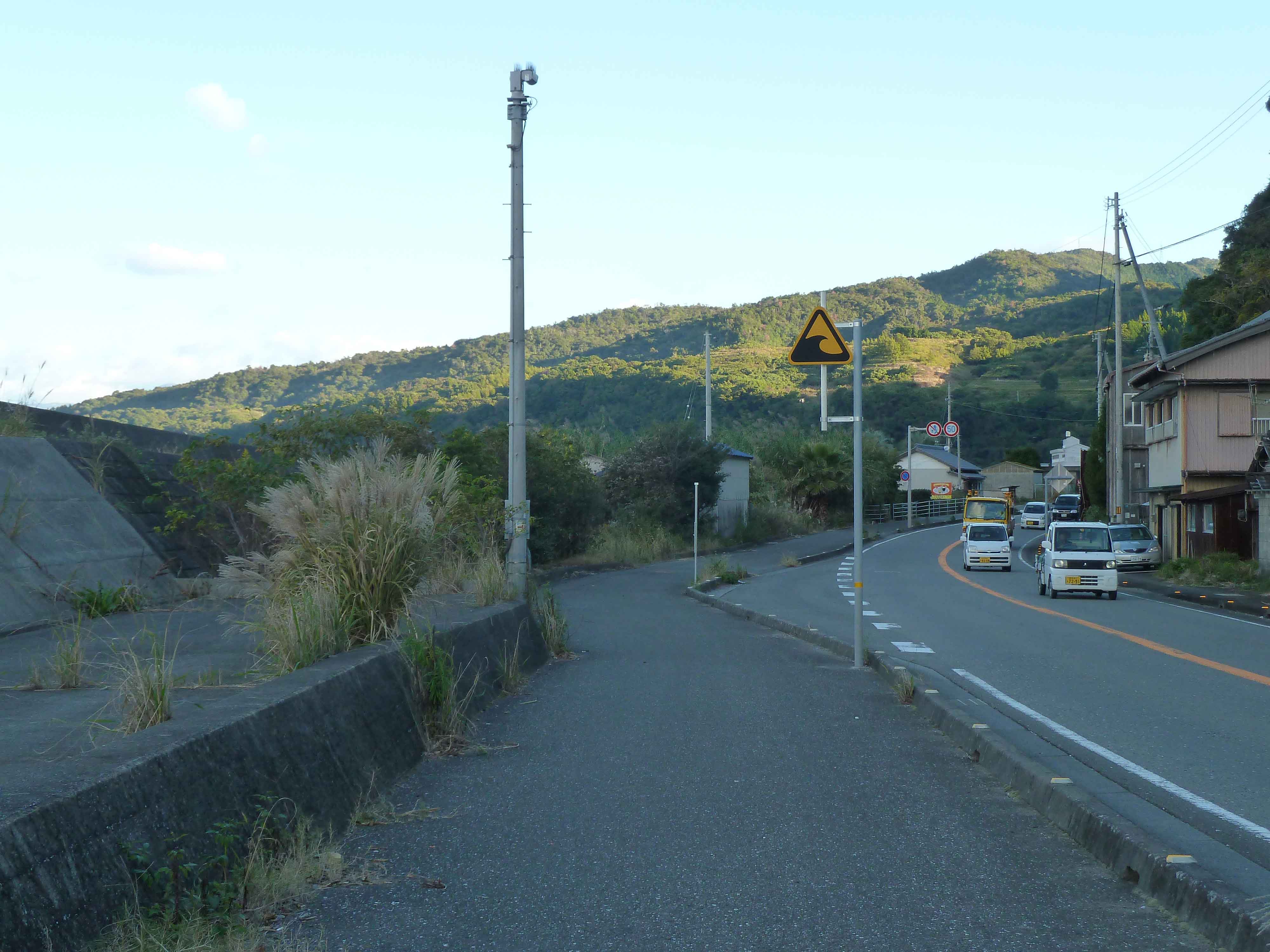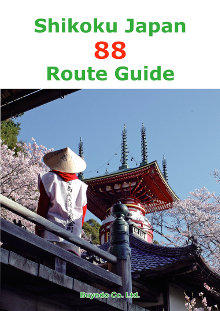SHIKOKU PILGRIMAGE PLANNING
| Differences with St james's Way The path: The GR65 in France is a nature hike bypassing all cities, Camino a wide gravel road through some towns. The Shikoku pilgrimage is in the life of every day, through cities and villages: 80% asphalt, often on bike paths beside the road (left), or sidewalks on sewer plates (pictured right), 20% on steep mountain trails in the forest. You are not ON the main road, and the Japanese drive very slowly, so no fears as in Italy's Francigena, but you're often walking with cars next to you, sometimes all day long. Mountain paths are much more physically demanding than Compostela, and slippery in wet weather .  
Pilgrims Walkers are a minority, seldom more than 10 per day, usually 4-5, but you can go a week without seeing anyone, and staying alone at the inn. Comparable to the Path beetween Geneva and Le Puy, or Francigena. Many walk a few days, and you'll see just a few where distances between temples are important. By cons on arrival at the temple, buses are there with large groups of pilgrims in white dress. Pilgrims walk in general alone, but you'll meet them at noon or at the hostel. Very few speak English, learn a minimum of Japanese. No dormitories or hostels . Accomodation in minshukus (family hostels) half-board , breakfast is almost as complete as the evening meal. If there are other pilgrims , meals together, but sometimes each served in his room , so that night, you can feel alone. The Japanese are quite reserved: Camino's large tables for a beer and early arrival to visit the city are not common in Shikoku . They often walk from morning to evening and arrive at bath time , half an hour before going to table ( 17:30 or 18h ) 20h everyone sleeps. Food is only Japanese rice, raw fish ( sashimi) , vegetables, mushrooms . In towns , there are also business hotel and restaurants. Outside the high season minshuku are reluctant to open for one people ( Yasumi no hi " day of rest" or Ippai " we are full ! " ) , And it is sometimes necessary to go to business hotel at the nearby town by bus or train and return back to resume ones way on the next day. |
When?
In SPRING (March to May) or in AUTUMN (October to November) The rainy season is in June The summer is very wet and moist, it is painful to walk, paths are gullied and slippy and 3-4 typhoons are possible Typhoons in august - september In winter it snows in the mountains It rains 4 times higher in southern Shikoku than in London, and 2 times more than in Bangkok in full monsoon. Compare the climates in Kochi on Kochi climate |
88
temples on
the Net
*** All you really need to know is on David
Turkington's website:
Shikoku henro trail
*** Chonta henro: The most complete website for the stages, with photos. I
prepared
my trip with it.
Description
of the author's stages with photos. A good
walker, 40 km stages don't frighten him!
Chonta
henro
*** "Echoes of incense", Don Weiss's book which inspired most
occidental henros to the roads
of Shikoku .
Echoes
of
incense, a pilgrimage in Japan de Don Weiss
*** Jeffrey Hackler's pilgrimage guide, the good advice before departure
Shikoku
pilgrimage guide de Jeffrey Hackler
*** The basic Japanese website, main
pages in English
Kushima
*** A Swiss movie "Aruki henro". You can look at the trailer.
Aruki
henro
*** If you have some questions before departure (in french, german or english), I can answer (but only to practical questions).
(type this antispam address in your email agent)
*********************************************************
![]()



